Construction on Ruthin Castle began in 1277, initiated by the first Lord Grey. It was built as a fortification during Edward I‘s conquest of Wales.
Ruthin Castle History
The king was determined to bring the Welsh people under English rule, building a ring of formidable castles throughout the land known as the ‘Iron Ring’.
The castle’s strategic location on a hilltop overlooking the Clwyd Valley made it an ideal site for a fortification. Lord Grey oversaw the building of a medieval castle of wood and stone, featuring multiple towers, a moat, gatehouse, curtain walls and other defensive structures.
For the next few centuries, Ruthin Castle stood as an important defence for English towns near the Welsh Marches like Wrexham and Oswestry. As the Welsh continued to rebel against English rule, the castle was besieged on many occasions.
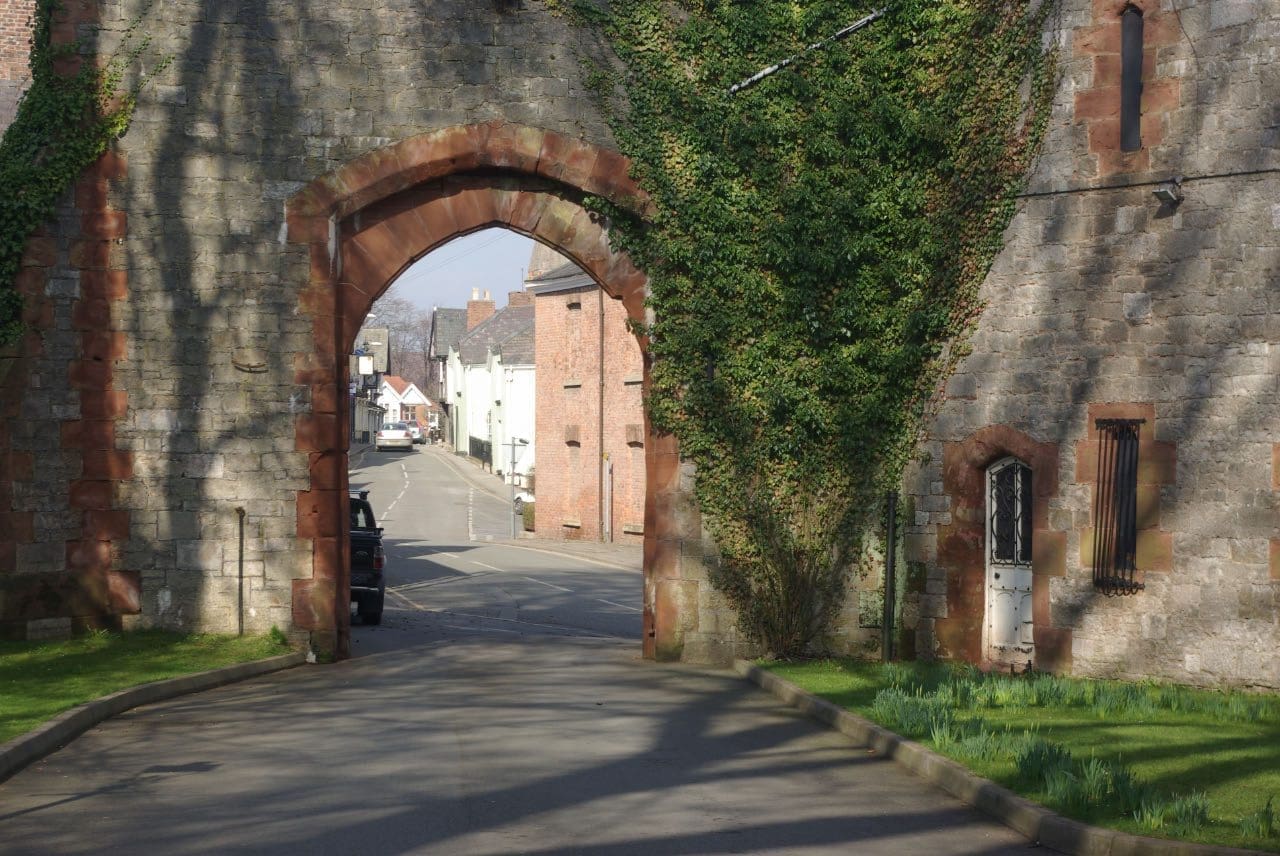
In 1294, during the revolt of the Welsh prince Madog ap Llywelyn, the castle was attacked but withstood the onslaught. The English supply train carrying food, weapons and armour to Ruthin Castle was ambushed by Welsh forces however, in an early battle of the revolt.
Throughout the 14th century, the castle continued to play a pivotal role in the struggle for control of northern Wales. During the rebellion of Owain Glynd?r in 1400, the castle provided refuge for English settlers fleeing the attacking Welsh army. The strong fortifications of Ruthin Castle allowed it to withstand assault during Glynd?r’s six-year rebellion, which destroyed many English castles throughout Wales.
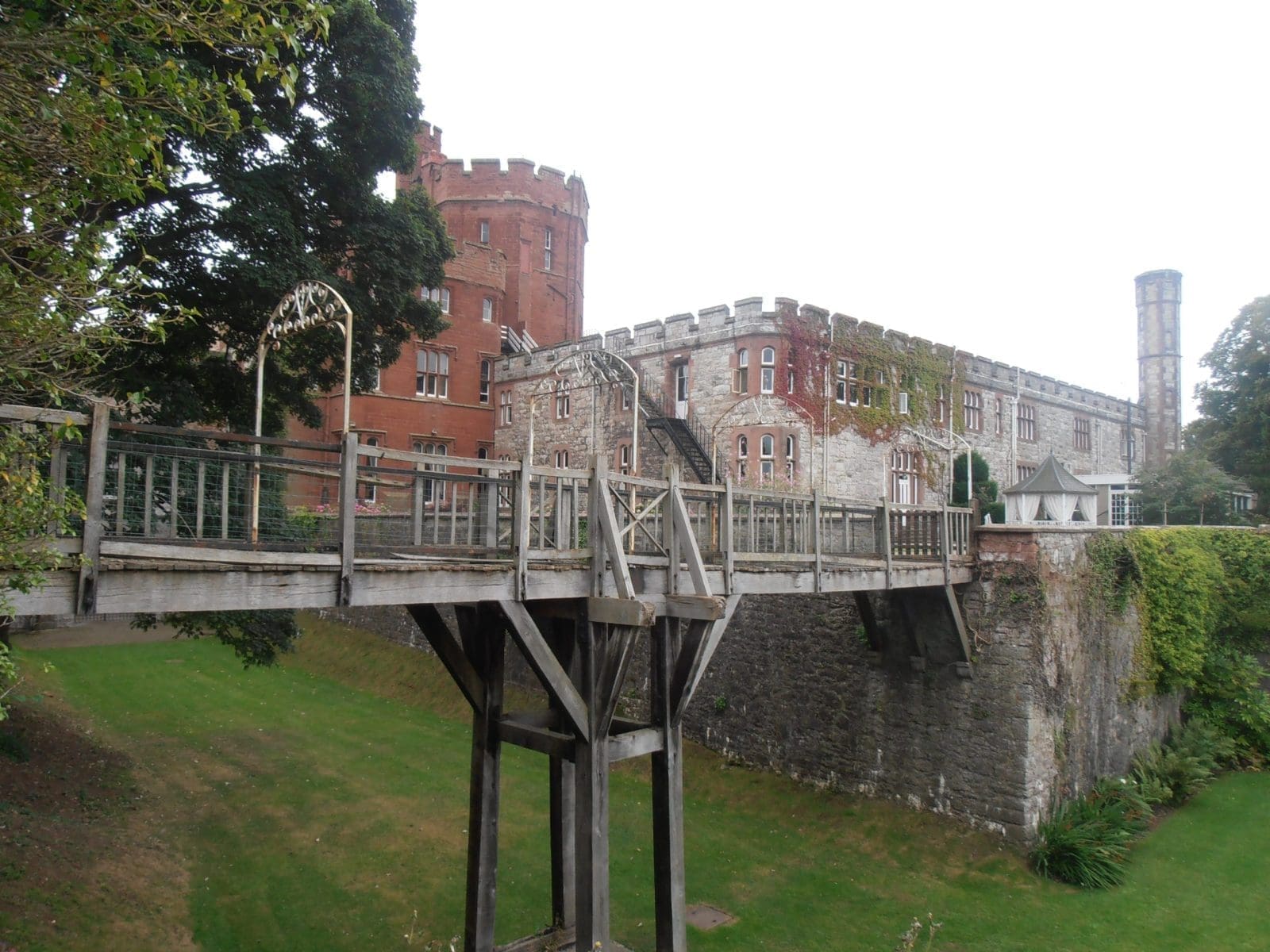
For over a century, Ruthin Castle stood as a testament to English military power on the strategically vital Welsh Marches. The mighty medieval castle withstood all that the Welsh rebels threw against its walls. It was built as a formidable fortification in a conquered land and served that harsh purpose for many long years.
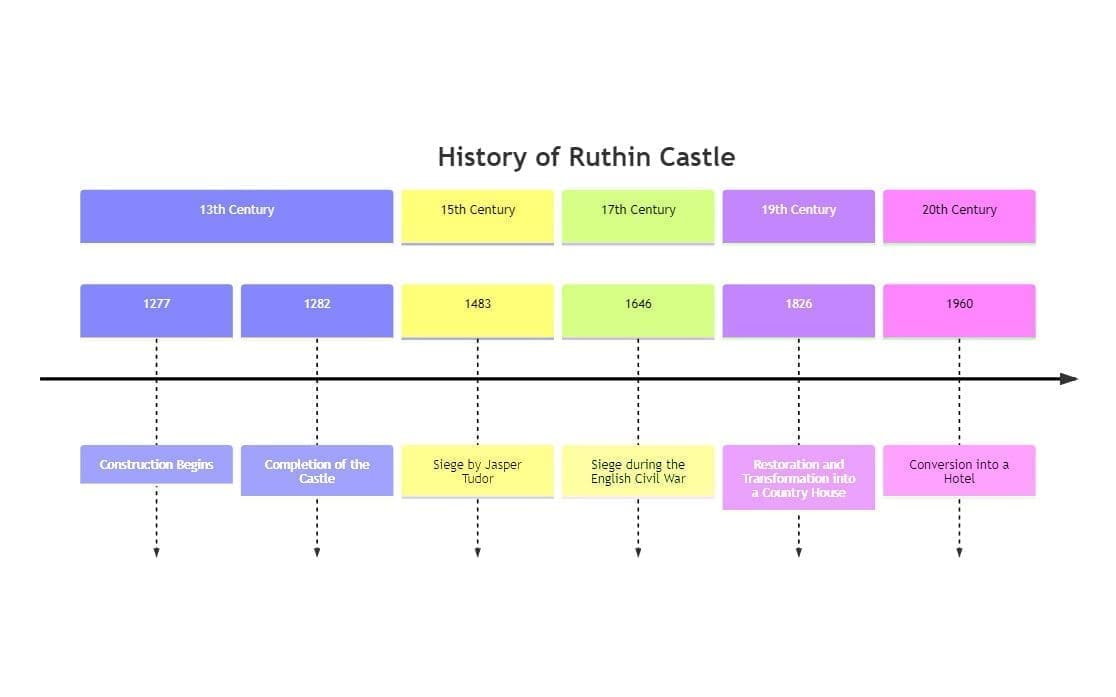
The Changing of Hands
Over its centuries of history, Ruthin Castle passed through many different noble families, surviving wars, rebellions and changing fortunes.
The original de Grey family who built the castle controlled it for 150 years until 1389. Through marriage, the castle then passed to Reginald de Grey, 3rd Baron Grey de Ruthin. The de Grey family would continue holding Ruthin Castle for the next two centuries.
During the 15th century Glynd?r revolt, Reginald de Grey defended the castle from a long siege. In 1460, control of Ruthin Castle was granted to Sir William Hastings by Edward IV. However, when Hastings was executed in 1483 by Richard III, the castle returned to the de Greys.
English Civil War
In the early 16th century, Ruthin Castle was acquired by Thomas Cornwallis through his marriage to Jane de Grey, joining other properties owned by the prominent Cornwallis family. During the English Civil War in the mid-1600s, it was garrisoned by Charles I’s Royalist supporters.
Twice besieged by Parliamentary forces during the war, Ruthin Castle was defended valiantly by Colonel William Salesbury on behalf of the king. But by war’s end, it fell under control of the Parliamentarians. In the war’s aftermath, the castle began to fall into a state of disrepair.
Piece by piece, Ruthin Castle was stripped of stone and demolished over the next century. Parts of the outer walls were taken down and building materials scavenged. For a period, the castle grounds were used for agricultural fattening of cattle.
From Demolition to Restoration
After surviving medieval warfare and the English Civil War, Ruthin Castle began a period of decline in the centuries that followed. Having changed ownership several times, the castle progressively fell into disrepair.
By the 18th century, Ruthin Castle was largely abandoned and in ruins. Significant parts of the castle walls and towers had been demolished over the years, with the stone removed for use in other construction projects nearby. The castle grounds became pasture fields for cattle grazing.
Many of the castle’s medieval rooms had their roofing stripped, exposing the interior floors below to the elements. Sections of the curtain walls were pulled down, leaving gaping holes in the castle’s defences. Ruthin Castle looked destined to crumble completely into ruin.
Myddelton Family
But in 1826, the Myddelton family purchased the dilapidated Ruthin Castle and initiated major restoration work to save the castle from further destruction. Having made their fortune from lead mining industries, the Myddeltons had the means to restore Ruthin to its former glory.
Significant time, effort and money were invested in the decades-long restoration project. By the 1870s, Ruthin had been transformed back into a habitable manor house with medieval styled rooms. Many damaged sections were rebuilt completely from scratch.
The Myddeltons turned the castle into a grand mansion in the Victorian medieval revival style. It became a popular destination for upper class Victorians, including Prime Minister William Gladstone who made several visits.
Thanks to the Myddelton family, Ruthin Castle was brought back from the brink of total ruin. Their loving restoration saved the medieval castle, converting it into a luxurious private mansion that continued to draw prominence. The castle entered a new prosperous phase after centuries of war and neglect.
A New Chapter as a Hotel
After operating for decades as a private residence, the castle entered a new phase when it was sold in 1962. Over the ensuing years, the castle passed through several owners.
Parts of the castle were sectioned off into apartments for rental income. The luxurious Victorian interiors fell into some disrepair due to the costs of upkeep on such a historic building. A series of renovations were undertaken by various owners to modify Ruthin Castle to be more suitable as a commercial enterprise.
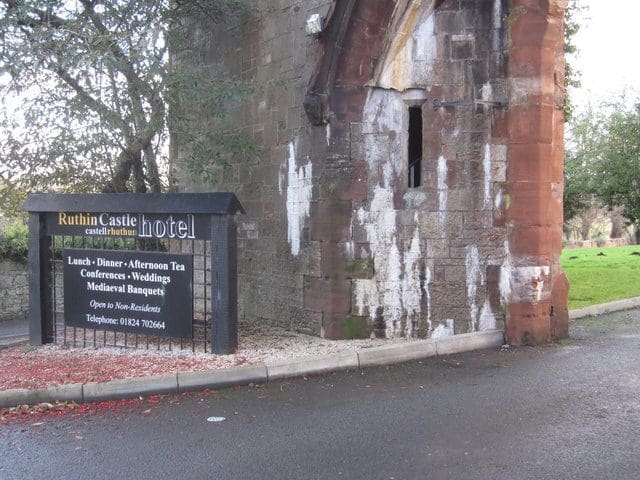
In the 1990s, the castle was purchased by Dr. Peter Rainsford, beginning a major redevelopment. After extensive renovations costing millions of pounds, the castle was reopened in 2007 as a high-end hotel.
The guest rooms were designed to recreate the experience of staying in a medieval castle, featuring four-poster beds, antique furnishings and luxurious fabrics. State-of-the-art amenities were installed while preserving historic decorative details.
The castle grounds were landscaped into scenic gardens and the medieval battlements turned into walkways for guests. A spa, indoor pool and fine dining restaurants provided luxury hospitality. The storied castle also became a popular wedding venue within the splendid great hall.
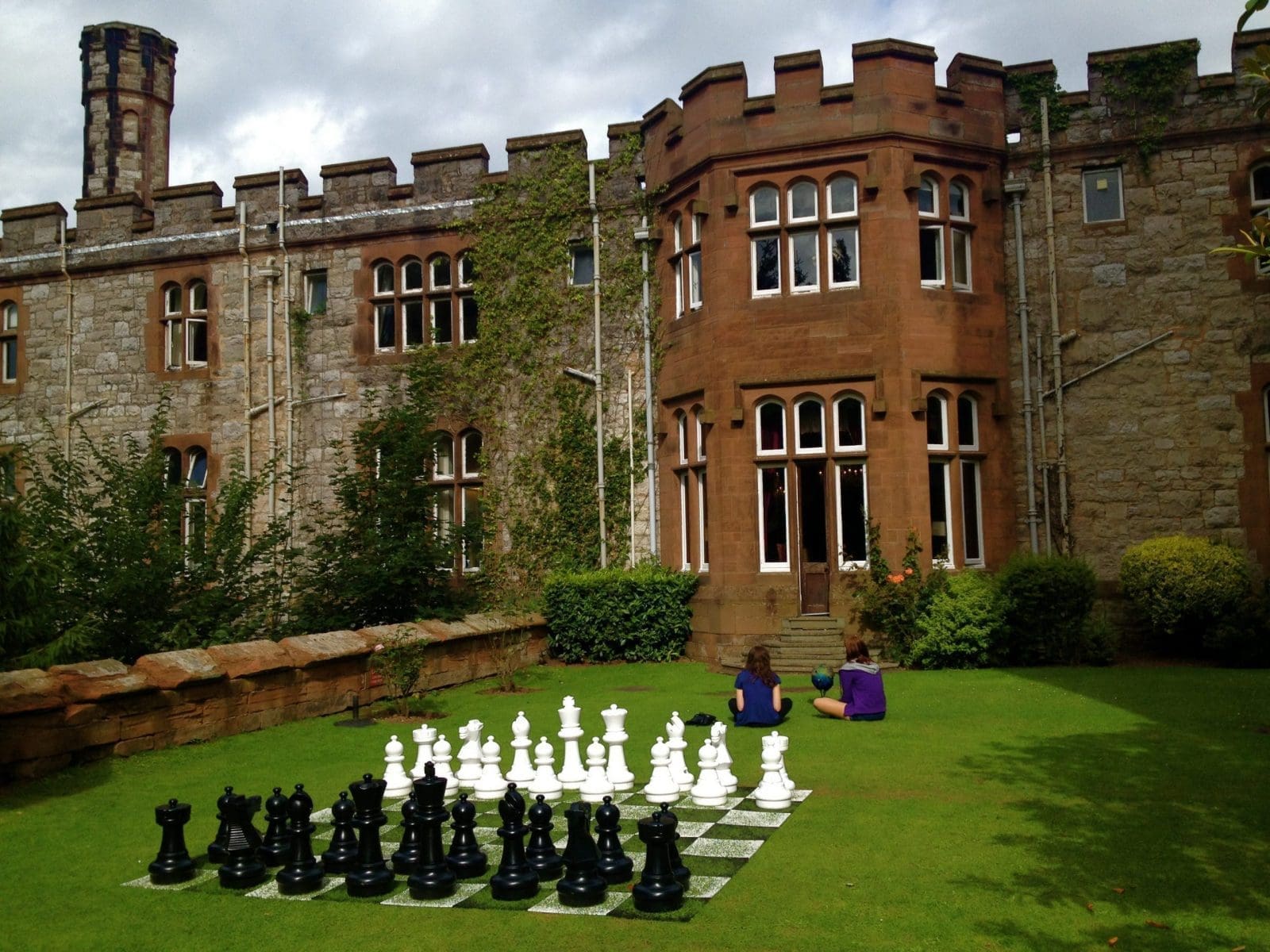
In its new role as a hotel, Ruthin Castle became accessible for the first time to the general public. Guests could now experience staying within the soaring medieval walls that had seen so much history. The castle entered its most modern chapter, catering to 21st century tourism while retaining centuries of heritage.
The rebirth of the castle as a hotel saved it from further decline and opened its doors wider than ever before. Within the historic castle walls, the storied past now mingles seamlessly with present-day comforts.
How to find Ruthin Castle
Map to Ruthin Castle Map and directions
Ruthin Castle address Castle Street, Ruthin, Denbighshire, Wales, LL15 2NU, United Kingdom





